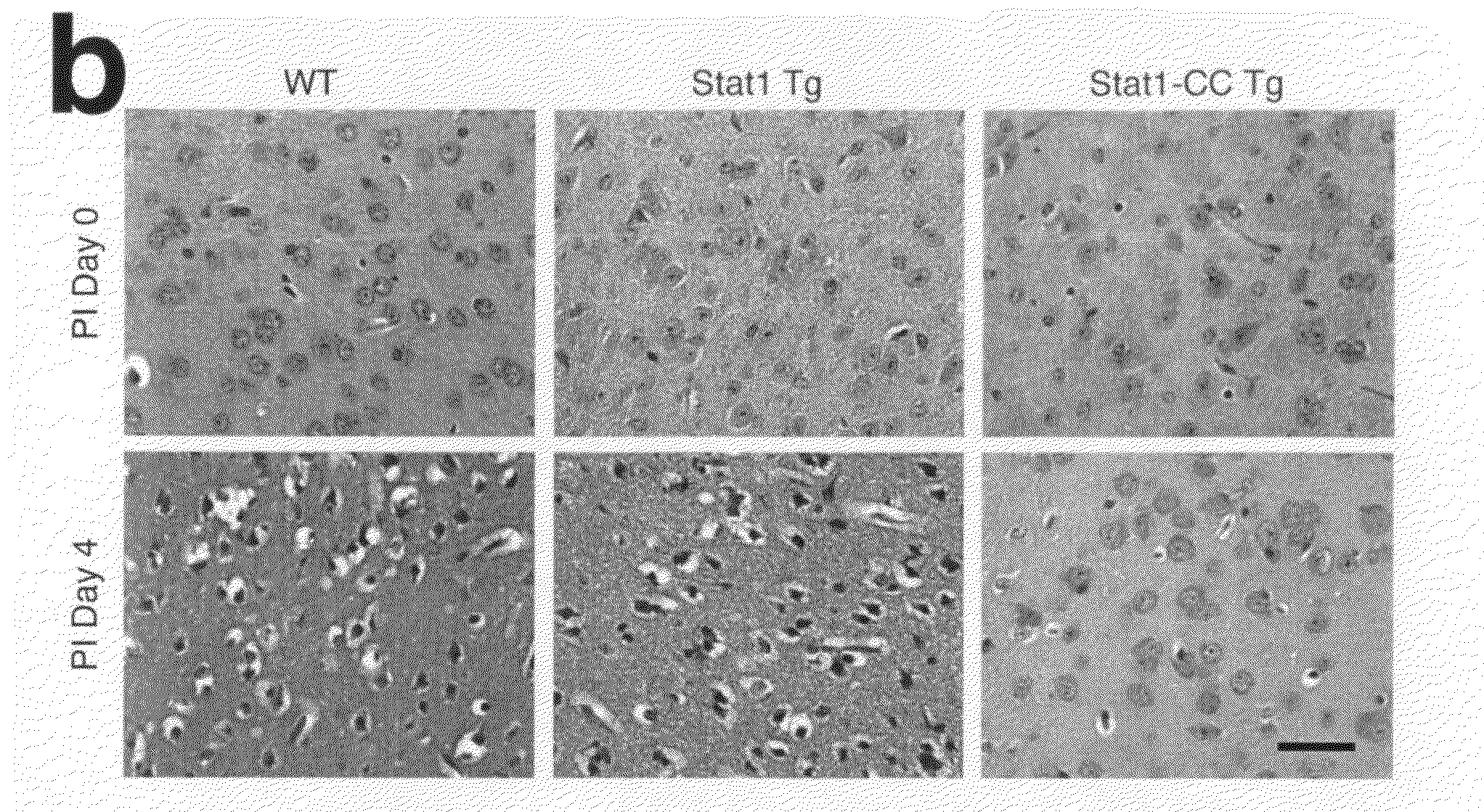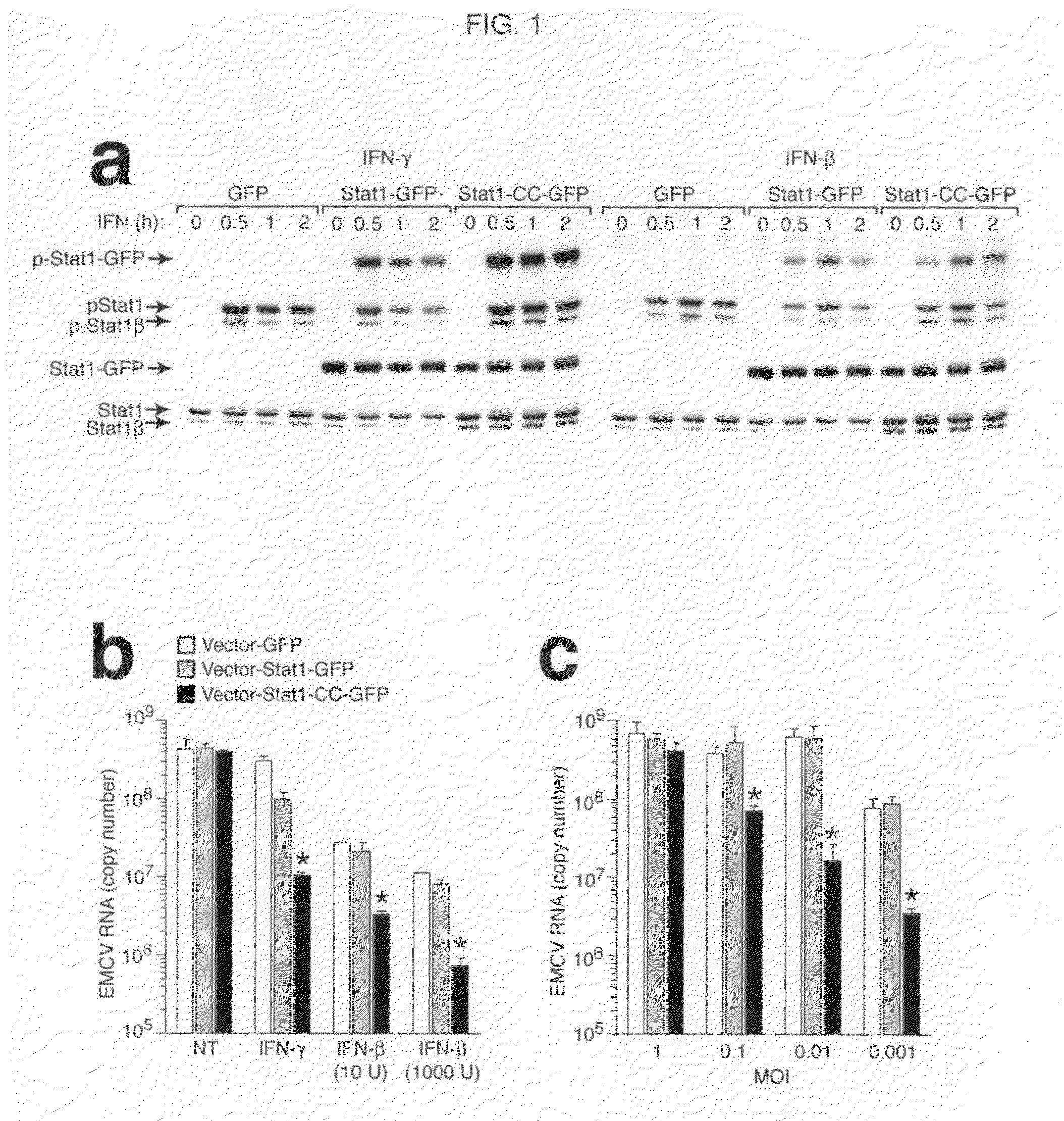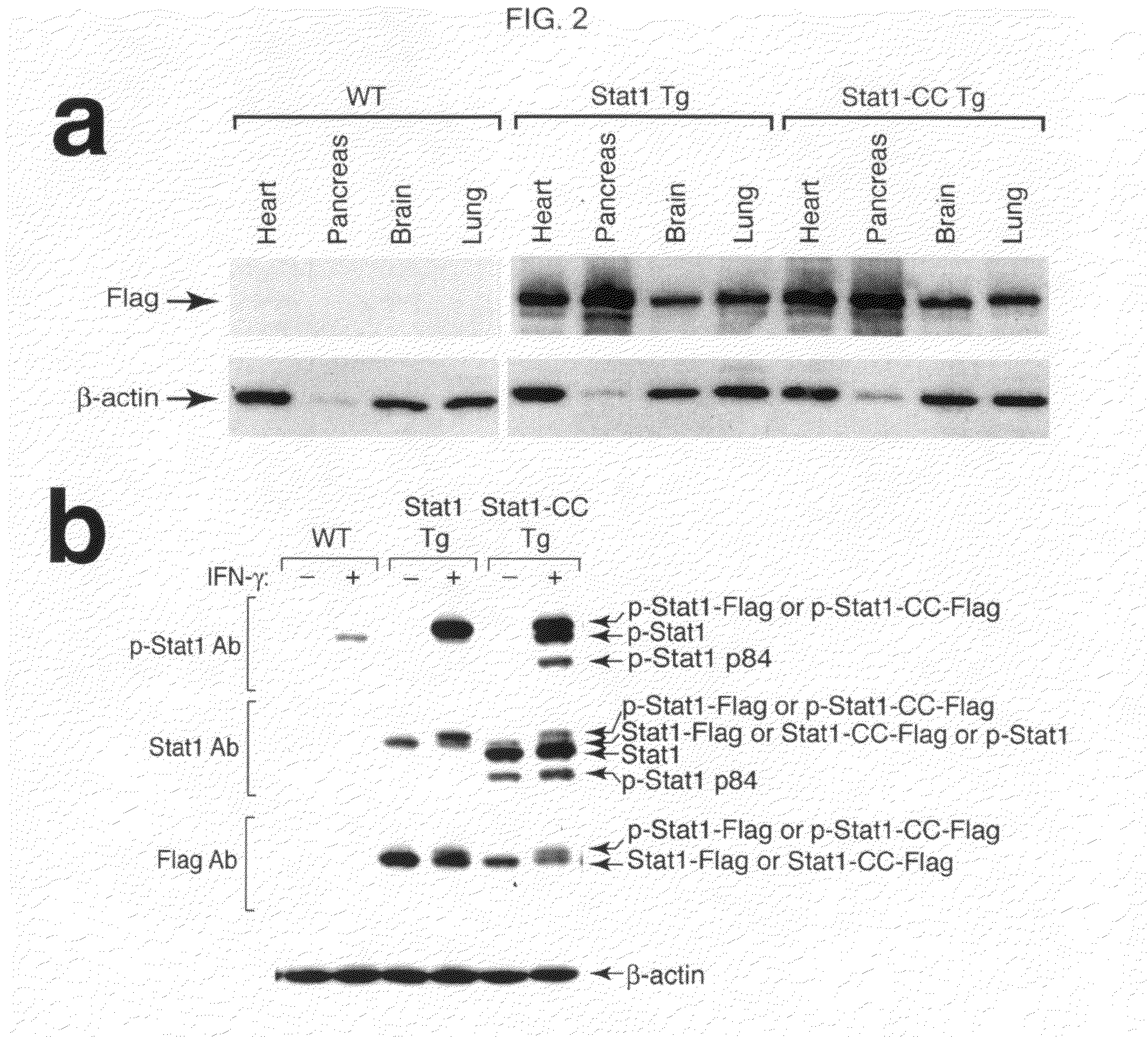Modified stat1 transgene that confers interferon hyperresponsiveness, methods and uses therefor
a transgene and hyperresponsive technology, applied in the direction of genetic material ingredients, viruses/bacteriophages, peptides/protein ingredients, etc., can solve the problems of limited human treatment effectiveness of viral infections, limited effectiveness of current antiviral treatments aimed at crippling viral replication mechanisms, and complex signaling pathways and functional activities, etc., to achieve enhanced activation efficiency, increased viral clearance rate, and enhanced effect of activation
- Summary
- Abstract
- Description
- Claims
- Application Information
AI Technical Summary
Benefits of technology
Problems solved by technology
Method used
Image
Examples
example 1
[0063]This Example illustrates improved control of viral replication in Stat1-CC-expressing 2fTGH human cells.
[0064]These experiments are illustrated in FIG. 1. In these experiments, as shown in FIG. 1a, 2fTGH cells were transduced with MSCV2.2 retroviral vector encoding GFP, Stat1-GFP, or Stat1-CC-GFP and then were treated with IFN-γ (100 U) or IFN-β (1000 U / ml). Cell lysates were Western blotted using anti-phospho-Stat1 (Tyr701) or Stat1 antibody. In FIG. 1b, 2fTGH cells expressing GFP, Stat1-GFP, or Stat1-CC-GFP were inoculated with EMCV (MOI 1 for 24 h) without (NT) or with pre-incubation with IFN-γ (100 U / ml) or IFN-β (10 or 1000 U / ml) for 6 h, and EMCV-specific RNA levels were assessed on post-inoculation (PI) Day 2. In FIG. 1c, for conditions in FIG. 1b, cells were also inoculated with indicated MOI. * indicates a significant difference from corresponding value for 2fTGH cells transduced with vector-GFP control.
[0065]The data demonstrate that expression of Stat1-CC confers be...
example 2
[0066]This Example illustrates Stat1-CC transgene expression and activation in mice.
[0067]These experiments are illustrated in FIG. 2, as follows. FIG. 2a: Western blots of tissue homogenates from WT, Stat1 transgenic, and Stat1-CC transgenic mice using anti-Flag or anti-β-actin antibody. FIG. 2b: Western blots of myocardial tissue homogenates from WT, Stat1 transgenic, and Stat1-CC transgenic mice that were untreated or treated with IFN-γ (20,000 U given intraperitoneally) using anti-phospho-Stat1 (Tyr701), Stat1, or anti-Flag antibody. FIG. 2c: Representative photomicrographs of myocardial tissue from WT, Stat1 transgenic, and Stat1-CC transgenic mice treated with IFN-γ as described in FIG. 2b. Sections were stained using anti-Flag antibody and an alkaline phosphatase system and then counterstained with hematoxylin. Control staining with non-immune IgG gave no signal above background (data not shown).
[0068]In these experiments, we generated Western blots of tissue homogenates from...
example 3
[0069]This Example illustrates enhanced IFN efficacy for gene expression in Stat1-CC transgenic mice.
[0070]These experiments are illustrated in FIG. 3, as follows. FIG. 3a: Schematic representation of the expression cassette used for generating Stat1- and Stat1-CC transgenic mice. FIG. 3b: Real-time PCR analysis of Stat1-CC-dependent target mRNA levels in pancreas from WT, Stat1 transgenic, and Stat1-CC transgenic mice at baseline and 1 day after treatment with IFN-β. * indicates a significant difference from corresponding Stat1 transgenic control mice.
[0071]In these experiments, Stat1 and Stat1-CC transgenic mice were generated as described in Example 2 and using expression cassettes shown in FIG. 3a. We performed real-time PCR analysis of Stat1-CC-dependent target mRNA levels in pancreas from WT, Stat1 Transgenic, and Stat1-CC Transgenic mice at baseline and 1 day after treatment with IFN-β as shown in FIG. 3b. This data show that Stat1-CC transgenic mice exhibit increased gene ex...
PUM
| Property | Measurement | Unit |
|---|---|---|
| Size | aaaaa | aaaaa |
| Responsivity | aaaaa | aaaaa |
Abstract
Description
Claims
Application Information
 Login to View More
Login to View More - R&D
- Intellectual Property
- Life Sciences
- Materials
- Tech Scout
- Unparalleled Data Quality
- Higher Quality Content
- 60% Fewer Hallucinations
Browse by: Latest US Patents, China's latest patents, Technical Efficacy Thesaurus, Application Domain, Technology Topic, Popular Technical Reports.
© 2025 PatSnap. All rights reserved.Legal|Privacy policy|Modern Slavery Act Transparency Statement|Sitemap|About US| Contact US: help@patsnap.com



